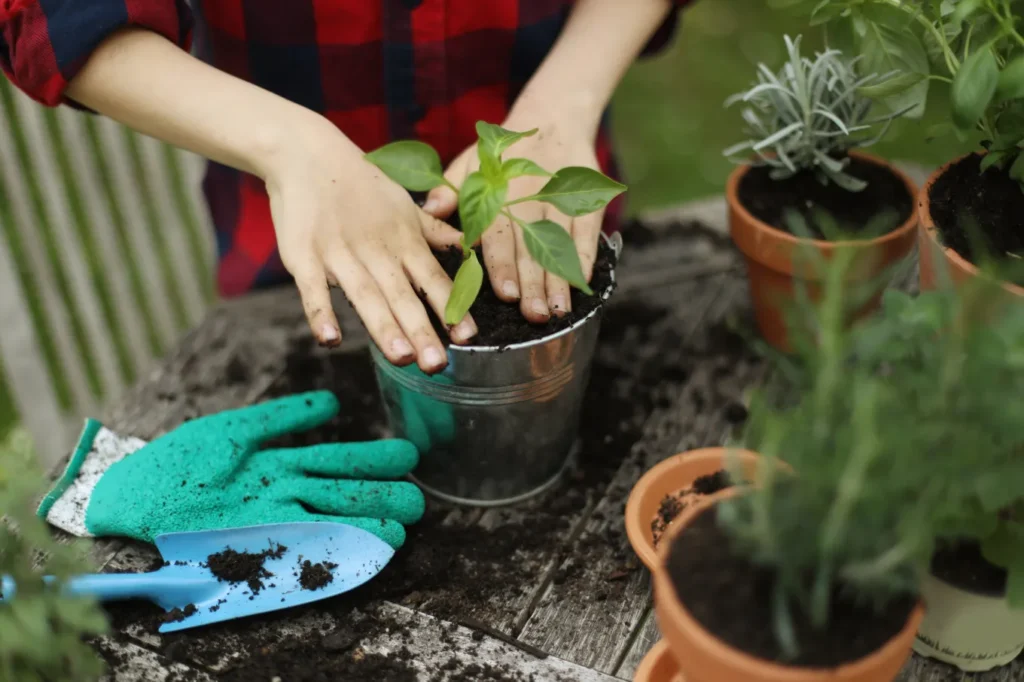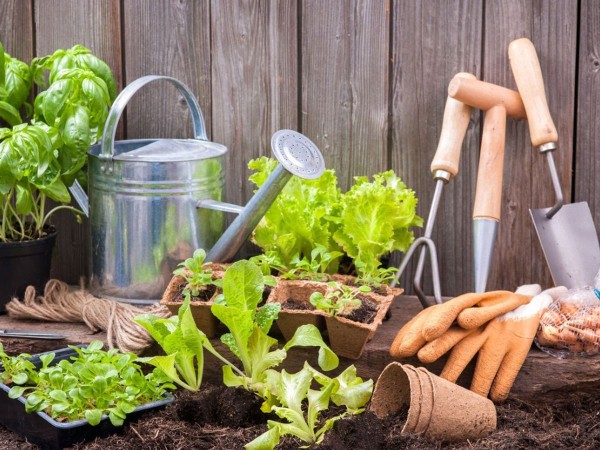Gardening allows one to unwind and has the added benefit of being productive. Nurturing your own flowers, herbs, or vegetables, enhances one’s space and fosters a deeper bond with nature. Gardening is becoming popular in India, particularly in metropolitan areas. One does not require a spacious yard; a small balcony or terrace is usually sufficient. This guide is meant for those who wish to start their gardening journey with small setups at home.

1. Finding the Right Spot
For home gardening in India, sunlight is very important.
Seek out places like balconies, terraces, backyards, or sunny window sills that receive 5 to 6 hours of sunshine daily.
Avoid places that are too windy and the completely shaded ones.
These locations should be close to water sources as well.
If you live in a flat or small house, container gardening or balcony gardening is a good option.
2. Focus on One Thing at a Time
If you are a beginner, it is best to not try to grow too many plants at once.
Starting with a few pots or a small raised bed is best.
Doing things step by step allows you to remain organized and not feel inundated.
Once you have grasped the basics, you can gradually increase the number of plants you desire to cultivate.
Beginners can start with tulsi, mint, coriander, tomato, spinach, and aloe vera.
These plants are perfect for urban gardening in India.
Also Read Easy Plant-Based Meal Prep for the Week: Indian Vegan Cooking Simplified
3. Prepare the Soil
Healthy plants depend on good soil.
Clear the ground of any plastic, stones, debris, weeds, and even pesky little plants.
The soil must feel loose and crumbly.
If your soil is clay-like or too hard, blend organic compost, sand, and cocopeat into it.
Alternately, you can buy potting soil at a nursery or an online store.
Composting or using cow dung manure enriches soil fertility naturally.
4. Get Basic Gardening Tools
There is no need to buy expensive tools.
As a beginner, you will benefit from these basic gardening tools:
- Trowel – useful for digging small holes
- Hand fork – used to loosen soil and remove weeds
- Watering can – for gently watering plants
- Pruning scissors – for cutting dead leaves and branches
- Gloves – to protect your hands
All these tools make home gardening simpler and quicker.
5. Select Beginner Friendly Plants
Choose plants that suit the climate of your region.
The following are the best beginner plants to grow:
- Mint
- Coriander
- Tulsi
- Curry leaves
- Tomatoes
- Chilies
- Aloe vera
- Marigold flowers
These plants can be grown in pots, which makes them ideal for beginners.
You can cultivate them on balconies, terraces and even windowsills.
6. The Basics of Planting
Use pots with holes at the bottom and of good quality.
The pots should be filled with the soil mix you prepared earlier.
Dig a small hole to put the plant or seed in.
Cover the hole with soil while pressing it gently.
Ensure to leave gaps between plants so they get ample airflow.
Water them immediately after planting.
7. Watering Procedures
Gardening requires frequent and vigilant watering.
Plants can suffer from overwatering or underwatering.
Check the soil condition before watering.
You can water only if the top inch layer is dry.
Always use a watering can to prevent splashing soil on delicate seedlings.
During hot summer days in India, you must water daily.
Every 2-3 days in cooler months.
8. Natural Fertiliser
Organic fertilisers are best for feeding, such as:
- Compost
- Cow dung
- Vermicompost
- Banana peels
- Neem cake
These can be applied once every 15-20 days.
Avoid chemical fertilisers at all costs, especially on edible plants.
Organic fertilisers do not pose any health hazards.
9. Mulching the Soil
Mulching prevents moisture evaporation and weed growth.
Dried leaves, grass clippings, and even coconut husk are suitable materials.
Spread a thin layer of it onto the topsoil.
Additionally, it shields roots from heat damage, particularly during summer.
10. Regular Maintenance
Daily plant inspection is a must.
Remove any dry leaves and flowers.
Prune shrubs to encourage bushier growth.
Clean containers and the surrounding area to minimize pest and disease presence.
This daily attention allows for healthier and stronger plant growth.
11. Pest and Disease Monitoring
Insects and fungal infections are common nuisances.
Check the leaves, paying extra attention to the undersides.
For pest issues, use a neem oil solution (1 tsp neem oil + water + few drops of soap) spray.
This is safe for gardens and natural home gardening.
Maintain a clean and dry environment for your garden.
12. Companion Planting and Crop Rotation
For vegetable gardeners, practice crop rotation.
Avoid planting the same crop in the same soil every season.
This practice improves soil nutrition and decreases pests.
You can plant marigolds as companions with vegetables as they deter harmful insects.
13. Careful Harvesting
Observe the maturity of vegetables and herbs before harvesting.
Mornings are generally the coolest part of the day.
Use clean scissors or hands to cut.
After harvesting, continue watering and fertilising the plant.
Read gardening books, follow YouTube channels, or join local gardening groups.
Don’t worry if some plants don’t survive.
Losses are a crucial component of education.
Gardening has a methodical, step-by-step approach.
Common Questions
Q1. Can I do gardening in monsoon season?
Gardening during the monsoon is okay, as long as there is proper drainage. Planting spinach, fenugreek, or amaranth are great options.
Q2. How much does it cost to start home gardening in India?
Starting a garden can be as low as Rs. 500 to Rs. 1000. Purchasing pots, soil mix, seeds, and some basic gardening tools are a good starting point.
Q3. Which plants grow well in summer?
During the Indian summer, okra, brinjal, tomatoes, cucumbers, and gourds thrive.
Q4. Can I grow vegetables indoors?
Absolutely. If there is sufficient sunlight, a windowsill is a great place for growing mint, basil, and coriander.
Q5. What’s the best time to start gardening?
You can begin anytime, but the most ideal periods are early winter, which has October-November and spring, February-March.
Q6. How do I protect plants from extreme heat?
Shade nets can be utilized to cover during summer afternoons. Soaking the soil lightly also helps, especially if done early in the day.
Q7. Where can I buy good seeds and soil?
Look for local nurseries or buy from trusted sites like Ugaoo, Nurserylive, or even Amazon India.
FINAL THOUGHTS
Home gardening is easy to do, nutritious, and brings joy to people.
Even in an apartment, there are always options to have something green.
If you have sunlight, good soil, the right tools, and a little patience, a bounty of fresh herbs, veggies, and flowers can be enjoyed right at home.
So make the move today and take that first step.
Start small, be consistent, and work towards a greener future.
Author- Ayush

1 thought on “How to Start Gardening- Absolute Beginners 2025 Guide”